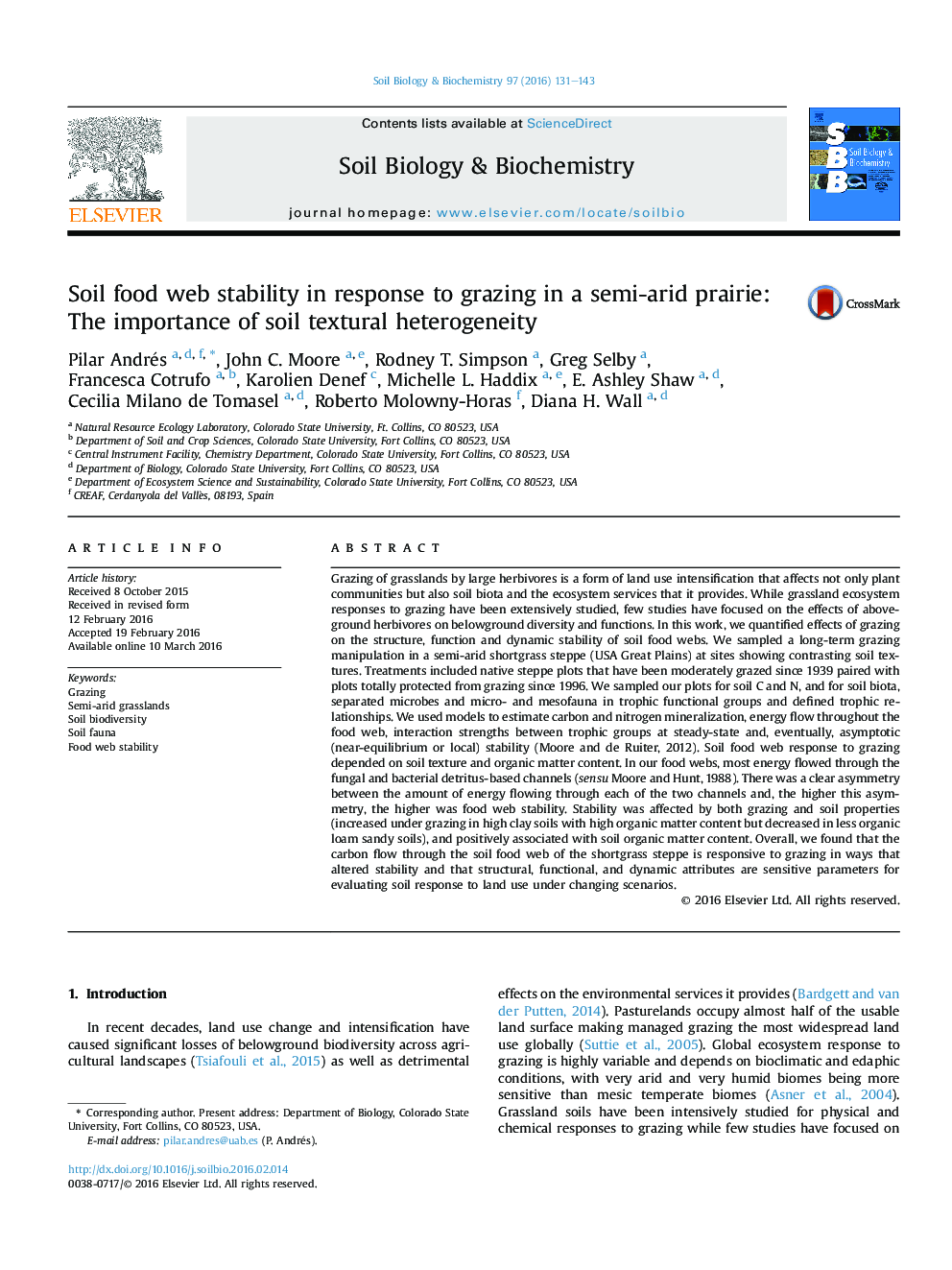| کد مقاله | کد نشریه | سال انتشار | مقاله انگلیسی | نسخه تمام متن |
|---|---|---|---|---|
| 2024328 | 1542587 | 2016 | 13 صفحه PDF | دانلود رایگان |
• We studied effects of grazing on soil biodiversity in a semi-arid prairie.
• We modeled the soil food web and derived C and N mineralization and web stability.
• Grazing did not affect soil characteristics or functional diversity.
• Grazing increased or decreased food web stability depending on soil richness.
Grazing of grasslands by large herbivores is a form of land use intensification that affects not only plant communities but also soil biota and the ecosystem services that it provides. While grassland ecosystem responses to grazing have been extensively studied, few studies have focused on the effects of aboveground herbivores on belowground diversity and functions. In this work, we quantified effects of grazing on the structure, function and dynamic stability of soil food webs. We sampled a long-term grazing manipulation in a semi-arid shortgrass steppe (USA Great Plains) at sites showing contrasting soil textures. Treatments included native steppe plots that have been moderately grazed since 1939 paired with plots totally protected from grazing since 1996. We sampled our plots for soil C and N, and for soil biota, separated microbes and micro- and mesofauna in trophic functional groups and defined trophic relationships. We used models to estimate carbon and nitrogen mineralization, energy flow throughout the food web, interaction strengths between trophic groups at steady-state and, eventually, asymptotic (near-equilibrium or local) stability (Moore and de Ruiter, 2012). Soil food web response to grazing depended on soil texture and organic matter content. In our food webs, most energy flowed through the fungal and bacterial detritus-based channels (sensu Moore and Hunt, 1988). There was a clear asymmetry between the amount of energy flowing through each of the two channels and, the higher this asymmetry, the higher was food web stability. Stability was affected by both grazing and soil properties (increased under grazing in high clay soils with high organic matter content but decreased in less organic loam sandy soils), and positively associated with soil organic matter content. Overall, we found that the carbon flow through the soil food web of the shortgrass steppe is responsive to grazing in ways that altered stability and that structural, functional, and dynamic attributes are sensitive parameters for evaluating soil response to land use under changing scenarios.
Journal: Soil Biology and Biochemistry - Volume 97, June 2016, Pages 131–143
